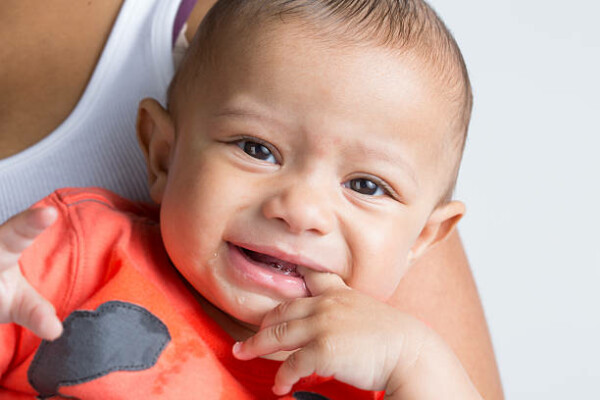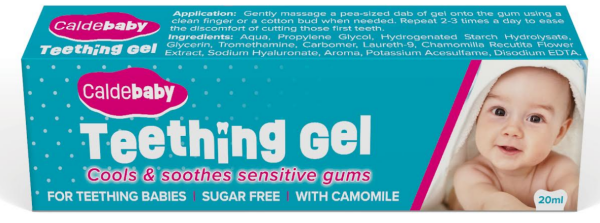So your new baby has arrived and before you know it, you are facing down the long road of teething. Here we look at the different stages of teething, from when to expect the first symptoms, to when they might be sporting a full set of pearly whites.
This is one area of your baby’s life that you’re allowed to wish away and hurry to get past: teething. After all, who likes seeing their baby in pain? And teething does cause little ones a lot of discomfort.
Teething is a necessary stage in your baby’s development but it’s one that can cause a huge amount of heartache for parents and baby alike.
Teething: when does it happen?
Your baby’s milk teeth first teeth start to develop when they’re in the womb. But the teeth usually pop through the gums during your baby’s first year.
That said, some babies are born with their first teeth and others don’t see any come through until after 12 months. As with all things baby, there are no hard and fast rules. By the time your baby’s two and a half to three years old though, they will more than likely have a full set of teeth.
It usually starts to happen when they’re six to nine months old however your baby may show signs of teething from about 13 weeks. Your baby will likely be more unsettled than usual, with excess drool and wanting to chew everything in sight.
Signs of teething:
The signs widely agreed to be sure indicators of teething include:
- Drool and lots of it. Babies can dribble way more than usual.
- Them biting and gumming down on anything and everything – that’s because the gnawing and chewing provides them with relief.
- Them being more grumpy, distressed and irritable than usual.
- Sore and red gums.
- A loss of appetite.
Your baby might be showing one of these signs or symptoms, or all of them. As with everything baby related, no two little ones are the same. In fact, teething signs can be so wide ranging, and vary so much from baby to baby that only one third of teething infants would experience any one of the signs above.
Is it really teething or something else?
A baby’s teeth sometimes appear with no pain or discomfort at all. But others experience a constant, dull pain that gets increasingly intense in the four days before a tooth pops through, before rapidly improving.
Try laying your baby on your lap and sneaking a peek inside their mouth by moving their top or bottom lip or gently coaxing open their jaw. You could also use a super-clean finger to gently feel around their upper and lower gums systematically, one potential tooth spot at a time.
Other signs and symptoms people often associate with teething but that studies have found are generally NOT linked with teething include: sleep disturbance, runny poos, increased number of poops and nappy rash associated with them and less interest or appetite for liquids but it’s really important that you don’t assume one of these is a sign of teething. It could be more serious and require medical attention. A fever and other clinically important symptoms, like diarrhoea, rashes and vomiting are very unlikely to be caused by teething, so make sure you talk to your GP or visit your local paediatric A&E.
How many teeth should my baby have and when?
A rough rule of thumb is that the age of your baby in months minus six gives the average number of teeth, up to the age of 2 years. For example a baby hitting their first birthday will have around 12 (months) minus six – so six teeth.
So what exactly is going on in there?
The gums swell and are tender to touch just before a tooth breaks through and so anything in their mouths could cause additional pain.
You might see their gum start to split slightly to make way for the emerging tooth. This is actually the cells in the gum over a tooth dying off, creating a path for the tooth to emerge through.
And with the molars (and occasionally the incisors) you can see a blistering on the gum or a smooth bluish swelling ahead of the tooth emerging.
How can you ease the discomfort of teething?
One tried and tested product that many mothers before you have come to rely on is Caldebaby Teething Gel which now comes with a new formulation that includes the addition of sodium hyaluronate. The reformulated product is now even better at cooling and soothing your baby’s gums and provides gentle care to your baby’s mouth.
Directions for use:
Gently massage your baby’s gums 2-3 times a day with the teething gel. The best times are after meals and before sleeping. Caldebaby Teething Gel has a pleasant honey flavour and is alcohol and sugar free - it is available in pharmacies and supermarkets nationwide.
For more information visit www.caldebaby.ie.







